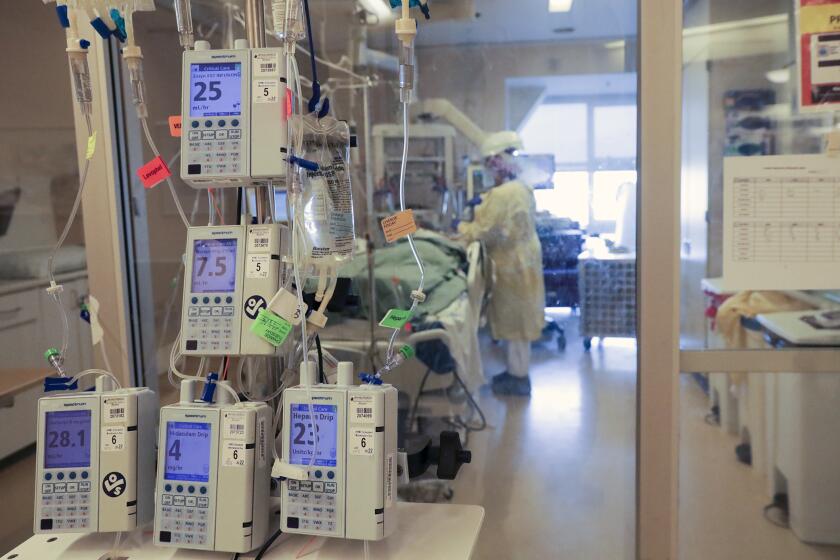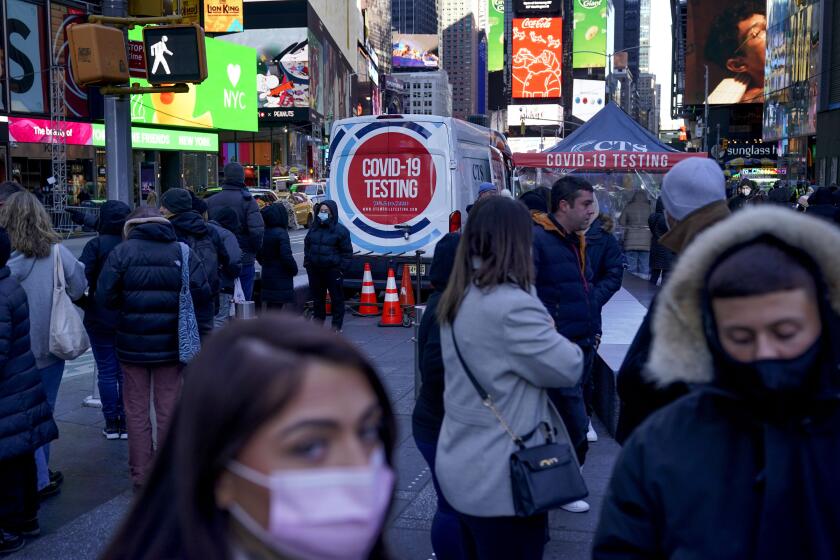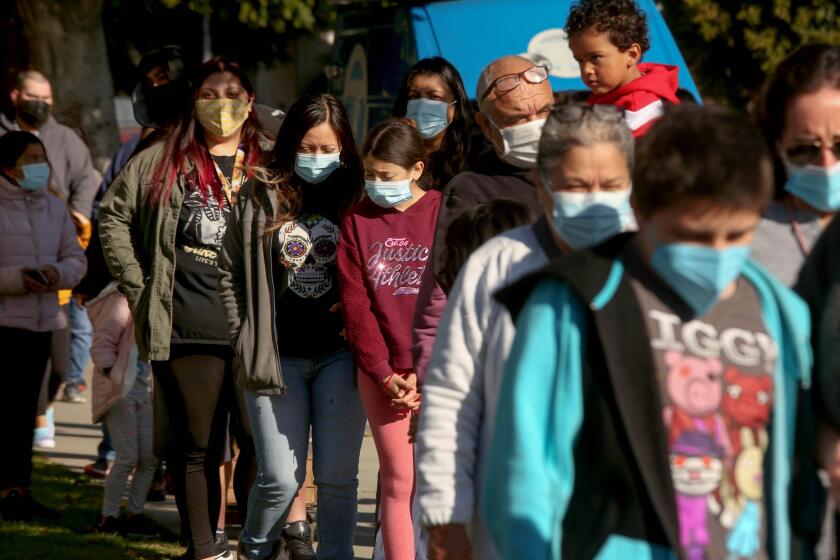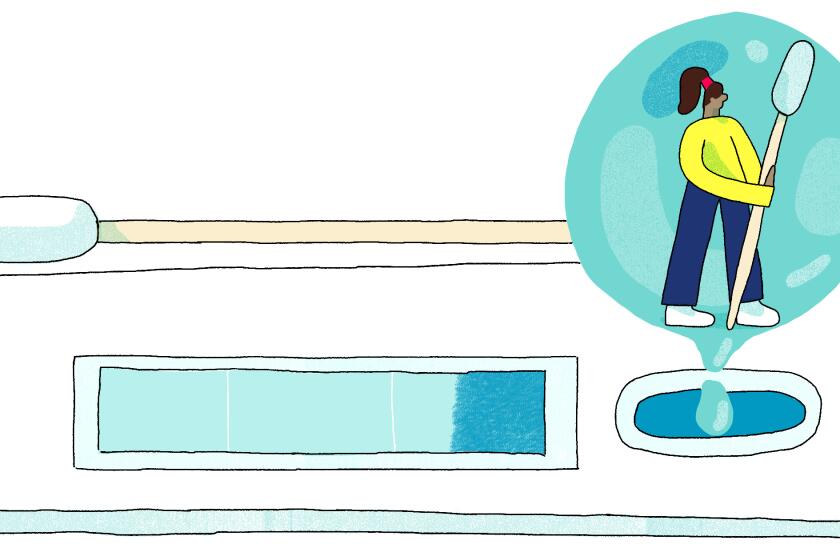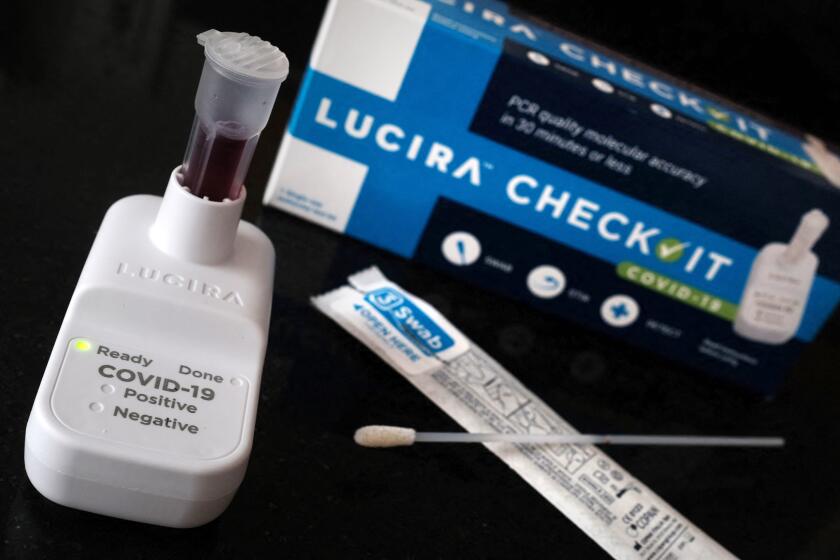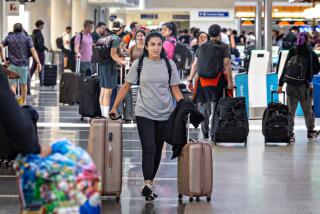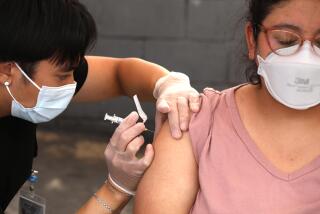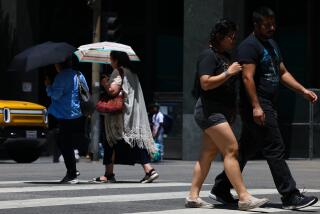What should I do if I test positive for the coronavirus?
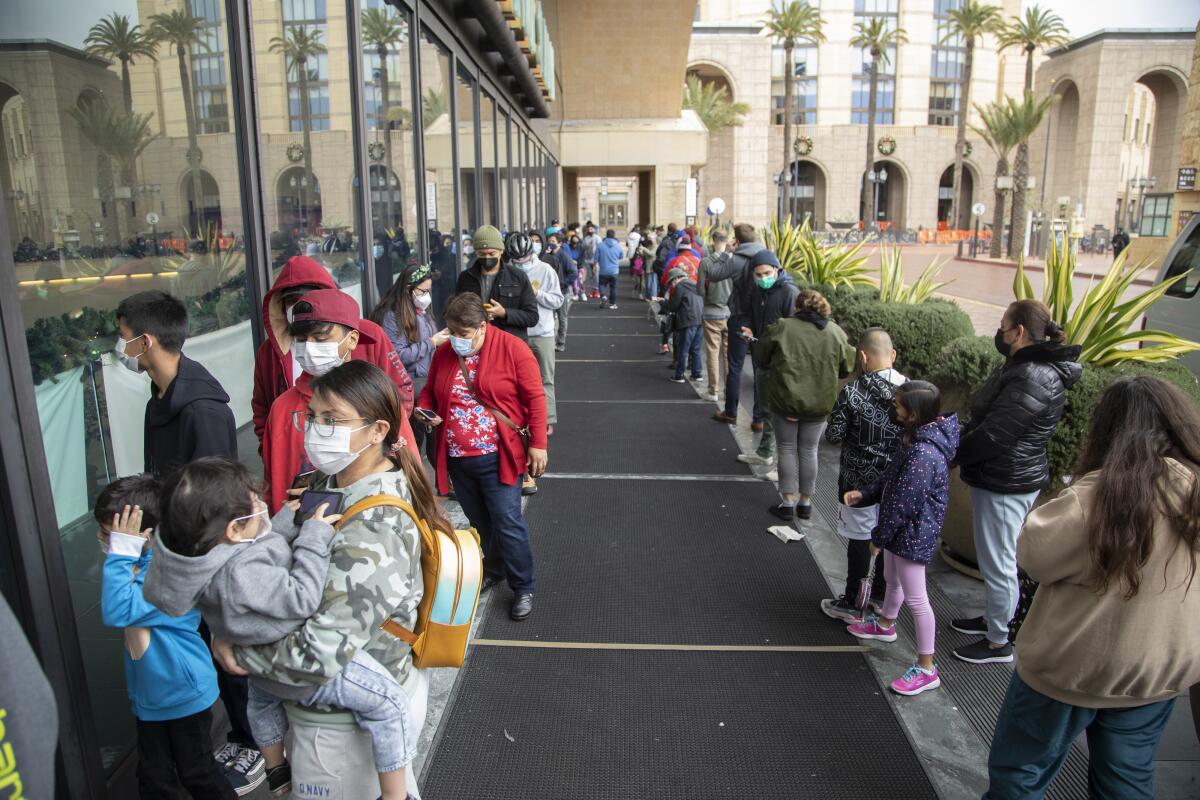
- Share via
The winter coronavirus wave is worsening, with case counts both in California and across the country rocketing toward some of the highest levels ever in the nearly two-year-old pandemic.
But as worrying as those raw infection totals are, some health officials say another metric is even more alarming: the test positivity rate.
As of Sunday, the seven-day average test positivity rate in L.A. County was 21.8%; for the previous weekly period, it was 12.4%.
Statewide, the positivity rate has risen to 15.9% for the seven-day period that ended New Year’s Eve. For the week that ended Christmas Eve, the positivity rate was 5.4%.
With transmission this widespread, officials say it’s vitally important to take steps to avoid potentially infecting others. Here are the current isolation and quarantine requirements issued by the L.A. County Department of Public Health.
The rise has been even steeper in Los Angeles and Orange counties — which saw daily patient counts grow by 43% and 71%, respectively, during the same time.
What should you do if you test positive but never show symptoms?
You must stay home for at least five days from the day your initial positive test was taken. To exit isolation at any point six to 10 days after your first positive test, you must have a negative coronavirus test result; the saliva or nasal swab needs to be taken on the fifth day or later after the first positive test.
You can also exit isolation after the 10th day after the first positive test without needing to get a negative coronavirus test.
The state recommends getting a rapid antigen test, not a PCR test, for the purposes of testing negative to exit isolation or quarantine between the fifth and 10th days following the first positive test. PCR tests are so sensitive they can show positive results weeks or months after someone has stopped being contagious.
If you have a severely weakened immune system, you might need to stay at home for longer than 10 days. “Talk to your doctor for more information,” the county says.
The CDC’s decision to shorten the recommended COVID-19 isolation and quarantine period from 10 days to five is drawing criticism.
What should you do if you test positive and show symptoms?
If you have symptoms and test positive for the coronavirus — or your doctor thinks you have COVID-19 — you must do the following things:
You must stay home until at least five days have passed since your symptoms first started; you have have a negative coronavirus test result, whose nasal or saliva swab is collected on the fifth day after symptoms first began; you have not had a fever for at least 24 hours; and, your symptoms are improving.
Alternately, if you don’t test again, you must stay home for at least 10 days after your symptoms first started; you have not had a fever for at least 24 hours; and your symptoms are improving.
“If your doctor initially thought your symptoms were due to COVID-19 (and you did not test positive for COVID-19) but they reassessed your diagnosis and decided that you are not infected, you can stop isolating after 24 hours of being fever-free,” the county wrote.
However, those who are close contacts of people with confirmed coronavirus infections must quarantine.
Who are considered ‘close contacts’ of infected people?
You’re considered a “close contact” of someone who tests positive for the coronavirus while they were infectious if you were within 6 feet of them for a total of at least 15 minutes over a 24-hour period; or if you had unprotected contact with someone else’s bodily fluids, such as if you were coughed on or sneezed on; you kissed; you shared a drinking cup or eating utensils; or you provided care to them without wearing the right protective equipment.
A person with the coronavirus is considered to be infectious under the following scenarios:
• If symptomatic, the person is infectious starting from two days before their symptoms first start until their isolation period ends.
• If symptoms never develop, the person is infectious from two days before their coronavirus test was taken until their isolation period ends.
Who is not required to quarantine after a close contact with an infected person?
People who are up to date on their COVID-19 vaccines — who also do not have symptoms — are not required to quarantine after being exposed to a close contact who tests positive.
That means you’ve received your booster shot, or you’ve recently received your primary vaccination series and are not yet eligible for a booster shot. Adults are recommended to get booster shots six months after their second dose of the Pfizer-BioNTech or Moderna shots, and two months after the primary dose of the Johnson & Johnson shot.
Those age 16 and 17 who received the Pfizer-BioNTech shot are also eligible for a booster.
L.A. County says that people up to date on their vaccinations or booster shots should still get a coronavirus test as soon as they hear they’ve been exposed to the coronavirus, and again on the fifth day after your last exposure. The county also says these people must wear a well-fitting mask while around others, indoors and outdoors, for 10 days after your last exposure to the infected person.
Who is required to quarantine after close contact with an infected person?
People who are not fully vaccinated, or are eligible for a booster shot but haven’t yet received it, must quarantine after close contact with someone who tests positive for the coronavirus.
These people must stay home for at least five days after your last contact with the infected person, and can only leave home on the sixth through the 10th days if they get a coronavirus negative test result; the nasal or saliva swab needs to be collected on the fifth day following exposure or later.
If you don’t test, you can end quarantine after the 10th day following the last contact with the infected person, as long as you don’t have symptoms.
These people should get a coronavirus test as soon as they hear they’ve been exposed to the coronavirus, and again on the fifth day after your last exposure. The county also says these people must wear a well-fitting mask while around others, indoors and outdoors, for 10 days after your last exposure to the infected person.
Health officials say it’s important to improve the fit of face masks and their filtration, going beyond old, loose, cloth face coverings.
What if I live with someone else?
You should stay away from other people and pets in your home as much as possible. Health officials recommend staying in a separate room and using a separate bathroom, if feasible, and wearing a mask when around others.
Those who have recently tested positive should also tell their close contacts that they may have been exposed.
Additionally, if you work or study in a setting where you could have gotten COVID-19 or passed it on to others, you should inform your school or workplace so they can advise others to test and/or quarantine as necessary, according to the county.
How can I get tested?
Those who have or think they may have been exposed can find a testing site at covid19.ca.gov/get-tested. Many retail pharmacies also offer testing appointments.
President Biden said his administration has also “worked with Google, so you can now search ‘COVID test near me’ on Google to find a location.”
Add some rapid COVID-19 tests to your holiday shopping list. Once you’ve got them, here’s what you should know about how, when and why to use them ahead of Thanksgiving, Hanukkah, Christmas or other holiday gatherings.
Many testing sites offer PCR tests, which entail collecting nose or saliva swabs and sending them to a lab for analysis. Results typically come back a day or two later.
Here is more information on getting tested in:
- Los Angeles County
- Los Angeles city
- Long Beach
- Pasadena
- Orange County
- San Bernardino County
- Riverside County
- Ventura County
- Santa Barbara County
- San Diego County
There are hundreds of testing sites across Southern California, and rapid test kits can be bought at pharmacies or ordered online.
What about at-home tests?
Many pharmacies and retailers sell over-the-counter antigen tests that can be taken at home and provide results in about 15 minutes.
Such rapid tests are highly recommended just before entering a holiday party or other gathering — including among vaccinated people, who are at risk of breakthrough infections.
However, demand for those tests has surged along with cases, making the kits hard to come by during the holiday season and prompting some sellers to limit how many a customer can buy at once.
If a rapid test turns up positive, “you must consider yourself infected and isolate immediately,” said Dr. Dawn Terashita, associate director of L.A. County’s Acute Communicable Disease Control program, at a recent town hall.
Rapid tests may result in a small number of people getting a negative test result when they’re actually positive, Terashita said. “If there’s concern about the possibility of a false negative test, the test can be repeated 24 hours later,” she said.
People who are symptomatic and get a negative rapid coronavirus test result “should retest and get a [PCR] test to confirm that you do not have COVID,” Terashita said.
PCR tests are often used to confirm the results of a rapid test and are less likely to result in inaccurate results, Terashita said.
Times staff writer Colleen Shalby contributed to this report.
More to Read
Sign up for Essential California
The most important California stories and recommendations in your inbox every morning.
You may occasionally receive promotional content from the Los Angeles Times.
